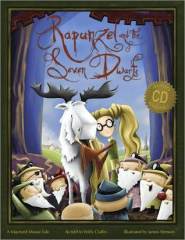I think that text complexity can certainly be a difficult issue sometimes. Of course I agree that students should be challenged when they read in order to improve, but I don’t ever want to scare children away from reading by consistently giving them something that is just too difficult for them to get through. I like how the article went through several different factors that can play into how complex a text is. It helps to be aware of these specific factors to know what I should focus on when teaching students to become better readers (and in helping to select books for students to read). The article also discusses three important components of literacy instruction: building skills, establishing purpose, and fostering motivation. Under building skills, my favorite part was that texts should be read multiple times, and each time the students should be looking for more, deeper, or different information. Vocabulary is another huge part of learning that should be of upmost importance.
Article #2: http://www.ascd.org/publications/educational-leadership/mar10/vol67/num06/Reversing-Readicide.aspx
This article talks about “readicide”, referring to the practices used by schools to improve reading scores but that are actually destroying students’ love for reading. The first factor associated with this is that schools develop test takers rather than readers. From this article, from personal experience, and from other’s observations, I would agree that the focus on testing seems to have taken over classrooms and the way a teacher runs things. This is so sad, and I hope I will be able to avoid this in any ways that I can when I become a teacher. The second factor this article talks about is that authentic reading experiences have been limited by schools. I agree that it is important for students to be engaged in readings about real-world things and not just isolated facts all the time. The last two factors are that teachers either overteach or underteach books. The key, of course, is to find the balance between the two. The article discusses the difference between assigning a text and teaching a text. As teachers, we should prepare students for what they are about to read and help them understand why the text is important to them today. Lastly, like the first article, this one talked about reading over texts more than once. I think this is key to help students better understand and foster more critical thinking.





